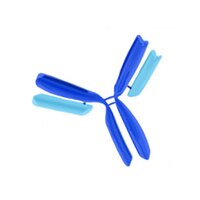The mef/elf4 transcription factor fine tunes the DNA damage response.
Sashida, G; Bae, N; Di Giandomenico, S; Asai, T; Gurvich, N; Bazzoli, E; Liu, Y; Huang, G; Zhao, X; Menendez, S; Nimer, SD
71
2010
| | 21616937 |
A hyperfusogenic F protein enhances the oncolytic potency of a paramyxovirus simian virus 5 P/V mutant without compromising sensitivity to type I interferon.
Gainey, MD; Manuse, MJ; Parks, GD
Journal of virology
82
9369-80
2008
Afficher le résumé
Viral fusogenic membrane proteins have been proposed as tools to increase the potency of oncolytic viruses, but there is a need for mechanisms to control the spread of fusogenic viruses in normal versus tumor cells. We have previously shown that a mutant of the paramyxovirus simian virus 5 (SV5) that harbors mutations in the P/V gene from the canine parainfluenza virus (P/V-CPI(-)) is a potent inducer of type I interferon (IFN) and apoptosis and is restricted for spread through normal but not tumor cells in vitro. Here, we have used the cytopathic P/V-CPI(-) as a backbone vector to test the hypothesis that a virus expressing a hyperfusogenic glycoprotein will be a more effective oncolytic vector but will retain sensitivity to IFN. A P/V mutant virus expressing an F protein with a glycine-to-alanine substitution in the fusion peptide (P/V-CPI(-)-G3A) was more fusogenic than the parental P/V-CPI(-) mutant. In two model prostate tumor cell lines which are defective in IFN production (LNCaP and DU145), the hyperfusogenic P/V-CPI(-)-G3A mutant had normal growth properties at low multiplicities of infection and was more effective than the parental P/V-CPI(-) mutant at cell killing in vitro. However, in PC3 cells which produce and respond to IFN, the hyperfusogenic P/V-CPI(-)-G3A mutant was attenuated for growth and spread. Killing of PC3 cells was equivalent between the parental P/V-CPI(-) mutant and the hyperfusogenic P/V-CPI(-)-G3A mutant. In a nude mouse model using LNCaP cells, the hyperfusogenic P/V-CPI(-)-G3A mutant was more effective than P/V-CPI(-) at reducing tumor burden. In the case of DU145 tumors, the two vectors based on P/V-CPI(-) were equally effective at limiting tumor growth. Together, our results provide proof of principle that a cytopathic SV5 P/V mutant can serve as an oncolytic virus and that the oncolytic effectiveness of P/V mutants can be enhanced by a fusogenic membrane protein without compromising sensitivity to IFN. The potential advantages of SV5-based oncolytic vectors are discussed. Article en texte intégral | | 18667520
 |
A human cytomegalovirus antagonist of type I IFN-dependent signal transducer and activator of transcription signaling.
Paulus, C; Krauss, S; Nevels, M
Proceedings of the National Academy of Sciences of the United States of America
103
3840-5
2005
Afficher le résumé
Type I IFNs are crucial components of the innate immune response to viral attack. They are rapidly synthesized and secreted after infection with human cytomegalovirus (CMV) and trigger a signal transduction pathway that involves successive activation and nuclear translocation of signal transducer and activator of transcription 1 (STAT1) and STAT2. The activated STATs, together with the IFN regulatory factor 9 protein, form a trimeric transcription complex (IFN-stimulated gene factor 3) that stimulates expression of numerous IFN-responsive genes, many of which exhibit antiviral activity. Here we demonstrate that the viral 72-kDa IE1 protein (IE1-72kDa) confers partial resistance to the antiviral activity of type I IFNs upon CMV. Accordingly, IFN-responsive transcripts accumulate to substantially increased levels after infection with an IE1-deficient mutant as compared with wild-type virus, and ectopic expression of the viral protein in stably transfected cells is sufficient to block their induction. We further show that IE1-72kDa forms a physical complex with STAT1 and STAT2 in nuclei of infected cells and in vitro and prevents association of STAT1, STAT2, and IFN regulatory factor 9 with promoters of IFN-responsive genes in vivo. Our results indicate that the viral protein blocks an intranuclear step after nuclear translocation and before DNA binding of IFN-stimulated gene factor 3, presumably by interfering with the integrity and/or correct subnuclear localization of the protein complex. This study identifies the CMV IE1-72kDa protein as a viral antagonist of the cellular innate immune response, inhibiting IFN-dependent STAT signaling by means of an unprecedented molecular mechanism. Article en texte intégral | Immunoprecipitation | 16497831
 |
Convenient assay for interferons.
Rubinstein, S, et al.
J. Virol., 37: 755-8 (1981)
1981
Afficher le résumé
A convenient assay for interferons based on reduction of cytopathic effect was developed. The number of manipulations and the lengths of the various incubation steps were reduced to a minimum. The assay is simple to perform and can be completed within 16 h. Moreover, it can be used with various types of cells and a variety of viruses. | | 6163873
 |















